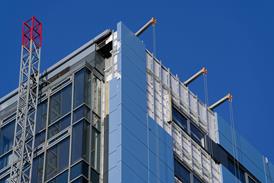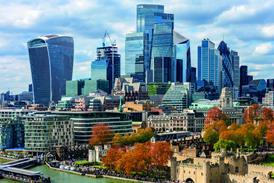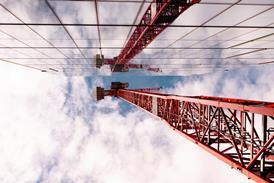Once dubbed 'toxic' workplaces, where only the very desperate would work, call centres have experienced a boom in recent years. For employers, they provide a multitude of cost efficiency and organisational advantages and are considered by many companies to be at the forefront of their efforts to improve customer services and sales.
In the past, call centre operators have set up shop in areas of high unemployment, gaining access to a large pool of workers who were simply grateful to have a job. But as the sector boomed, so competition for these workers has grown. With recruitment and retention problems reaching epidemic levels — publicised attrition rates average 25 per cent across the industry, although privately operators say it is probably double that — call centre operators have been forced to think again.
Enlightened employers in this sector are realising that architects, designers and management gurus may have had a point after all. Far from being gimmicky, creating a fun, stimulating, relaxing workplace through the careful selection of technology, facilities, decor and furniture, could in fact pay dividends.
'We are talking about fun without being daft. Fun in a light-hearted, professional way,' says Mark Alcorn, director of Interdec Working Spaces, a Glasgow-based architecture and interior design practice.
'We are finding that these types of clients are in the top group with regards to their awareness of design issues,' he says. 'We are speaking to a well-informed client base. These clients understand that what they spend on the fit-out of these workspaces will have an effect on their workforce.'
There are several driving forces other than the desire to hang on to staff, behind the industry's enlightenment: the dawning realisation that call centre agents are at the front line of any business's contact with its customers; the drive to improve customer services and sales figures; an acknowledgement that the industry's preferred ways of organising its operations, namely team-working, requires particular design considerations. Teamworking has become the organisational norm in call centres up and down the country. In most you will find agents grouped into teams of between eight and 12, each with a team leader.
Ordinarily, it is seen as desirable for the agents in that group to be located together, although whether the team leader sits with the team varies from call centre to call centre.
The design challenge of this way of organising workers is to find the right specification of furniture and other equipment. These should engender proper team working, enabling communication between the members of the group as well as privacy when dealing with clients?
'The importance of the team is at the heart of workspace utilisation in call centres,' says Wes MacGregor, director of design consultancy Advanced Workplace Associates. 'The choice is basically between having them sit in one cluster where they are all physically together or using the available technology to enable communications between team members, who may all be in the same building but sitting apart. In the latter scenario it would be the team leader who wears out the shoe leather keeping up with everyone.'
The predominance of the team in call centres poses challenges for the organisation as a whole. Team members may identify so strongly with their teammates, and the configuration of their desks may be such that they communicate easily with each other, that they fail to identify with the workforce as a whole. According to Ken Giannini, director of architecture at design consultancy DEGW, this team isolation needs to be taken into account when designing the layout of a centre's floor space.
'It is essential to create ways for people to meet each other. They work hard in their teams and get to know each other really well but, particularly in large and medium centres, it is important for them to socialise with others who work there so that they feel part of a bigger workforce,' he says. 'The circulation of people around a centre is important, so that people naturally bump into one another.'
Among DEGW's call centre clients, is investment bank Capital One with its award-winning building in Nottingham. A converted factory in the heart of the city, it was ranked third in a Times list of best places to work in the UK. Here the employer encourages staff to enjoy their work and their workspace by providing funds for entertainment and decorating the office. The results are not always necessarily a designer's dream.
'A couple of times that I have visited, I have thought: "Oh my God what have they done to my building?" It was like being in a student dorm again,' he admits. 'But as long as it's controlled and it helps them work then I think it's great. As architects we can't be too precious about our buildings. They are designed for people to use and will always be adapted and changed. It is for us to design them so they can be adapted.'
Personalising your working space is something we all do. But possibly in response to accusations of treating staff like battery hens, call centres have gone for personalisation in a big way. Not only are individuals invited to make their desks their own, but to create team identities and even to dictate the general office decor.
Sense of ownership
At Admiral Insurance, which operates call centres in Cardiff and Swansea, staff are encouraged to personalise their desks as they wish but also to have a say in the colours on the walls.
'We wanted to give our staff a sense of ownership over their working environment and to create an environment that was as much fun as possible,' explains Huw Llewellyn, group facilities manager.
The look of a call centre interior is not only about engendering better team working and team identity.
In some centres the interior is an extension of the company's branding, its business image. For Monster.com, Mark Alcorn's team of designers at Interdec set about imposing a strong corporate image on to the working environment. It was the design-informed client that had the original idea of bringing the wacky website alive, but it was Alcorn and his colleagues who had the tough job of imagining the characters and voices of the nine monsters that inhabit the site and translating them into the office design. The result is a distinctive working environment incorporating entertaining partitioning and theatrical lighting, asymmetric desk positioning, desk partitioning in wave-form frosted glass and a Monster den where staff lounge on scatter cushions and bean bags to watch satellite TV.
'Regardless of the type of call centre, they all need break-out spaces and places for relaxation and reorientation,' comments Mark Alcorn.
Some of the issues facing call centres have been unique to them. However, many of the problems they have faced were common to open plan offices when they first became popular — noise being foremost among them. Noise carries in an open space, so each time an agent raises their voice to hear or be heard over the din, the problem doubles. The solutions are to provide agents with top quality equipment and use noise absorption materials within the structure of the office space.
'The biggest issue for call centres is the concern that the hearing and voices of those working there will be adversely affected,' says Colin Mackay, head of quality and standards at industry body the CCA. 'Neither would be the case, unless someone has a pre-existing condition. However, it is important that the design of these centres take these issues into account.'
Banking union Unifi has claimed that agents are losing their voices and suffering other throat and voice problems due to the long hours they spend talking on the telephone. It has made several recommendations to alleviate the problem — keeping fresh water readily available, ensuring background noise is at a minimum and ensuring that equipment, especially headphones, are appropriate for the job and checked regularly for faults.
Preventing health problems
Faulty equipment and residual noise have both been identified as common causes of voice and hearing problems, as workers turn up the volume on headsets to hear customers or raise their voices to be heard themselves. The CCA's Mackay admits there are a number of outstanding cases claiming compensation for acoustic shock. UK telecomms union CWU has won compensation for acoustic shock victims, including a £92,000 payout to one.
Sufferers report symptoms including extreme pain, tinnitus, vertigo and hypersensitivity to loud sounds heard subsequently. They may also experience numbness, tingling or burning sensations around the ear. However, sufferers do not report hearing loss, distinguishing acoustic shock from industrial deafness.
'All our headsets are the best you can buy and we encourage staff to change the earpieces and mouthpieces frequently,' comments Llewellyn at Admiral, where an acoustic shock survey is currently being conducted.
'I am a big believer in natural light,' says Ken Giannini at DEGW. 'Some functional elements of call centres, like lighting, are extremely important. Natural light makes all the difference to the working environment in call centres. However, too much of it creates glare on computer screens.'
The trick is to strike the balance between providing as much natural light as possible, something universally acknowledged as essential in call centres, and preventing glare on the banks of computer screens that inhabit them.
The Capital One building had to overcome just such a challenge. With its tall ceilings, floor to ceiling windows and massive factory floor space, natural light was in abundance, especially through the saw tooth roof, a feature in many factories designed to angle light onto the shop floor.
Overcoming glare and rising temperatures was also a challenge for the owners of The Pyramid in Stockport, home to the Co-operative Bank's customer service department, the mortgage services department and internet bank Smile. All four sides of The Pyramid are glazed.
'Natural light is not a problem,' admits Alan Brown, customer service manager. 'Unlike at our centre in Skelmersdale, which is a 1970s converted car park and very dark.'
The solution to the bank's sunlight 'problem' was to put reflective film on all the windows to reflect the sun outwards and to install blinds on some windows to deflect both light and heat at certain times of the day as the sun moves around. Air conditioning is also essential.
The other advantage of having an all-glazed building is that wherever staff are situated they have a view, however slight, of the outside world. Something as simple as being able to see out of the building can help alleviate the stress of dealing with call after call. And like the staff at virtually every other call centre these days teams of agents at the Pyramid are encouraged to make the interior a reflection of themselves. 'The skill and ingenuity they put into customising their areas is amazing. It all helps to lighten the place up but its main contribution is that it creates an enthusiasm for the job, the customers and the business,' says Brown.
By getting some of the basics right — lighting, equipment, furniture, decor — call centres are hoping to see a turnaround in the attrition rates among staff, although there is little concrete evidence yet to prove it has worked.
But with some good practices now embedded in the minds of the centres' operators, their transition into second-generation call centres may be smoother. Call centres are evolving. The majority are now not referred to as call centres. Even the industry body, the Call Centre Association, now prefers to be known simply as the CCA. What we are seeing is the emergence of contact centres — multimedia workplaces where customers have a range of options as to how they wish to make contact with the company.
The contact centre agent may be handling enquiries via mobile phone text messages, web messages, faxes and emails, in addition to the traditional phone call. More technology increases demand on floor and desk space and facilities managers will have to rise to that challenge.
The customer chooses
'Second generation contact centres have been emerging over the last 12 months or so. The agents are expected to deal with customers by whichever means the customer chooses. This will bring some interesting challenges for organisations, both in terms of the technology and ensuring the well-being of those agents," comments Wes MacGregor at AWA.
Other challenges awaiting facilities managers at these centres are those presented by the increasing trend to operate them 24/7, says MacGregor. AWA already has one banking client offering a massive range of part-time and full-time shift patterns to its agents, which is creating significant overlap in demand for facilities such as parking spaces and desks.
'An overlap of just half and hour means huge pressure on the available workspaces,' says MacGregor. 'It is a hallmark of contact centres, in trying to make them more user-friendly, that agents are given a workspace that they can personalise. But the introduction of numerous shift patterns means that at times some workspace is redundant while at others it is insufficient.
It will be down to facilities managers to decide if this means encouraging shared workspaces to tackle the challenges that poses to fostering team-work and a sense of ownership.
Source
The Facilities Business



















